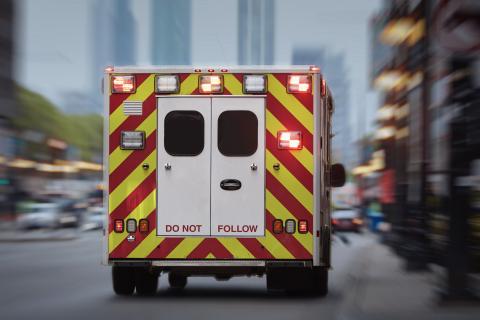
Severe hypoglycemia should be considered an emergency.
Don't hesitate to call 911. If someone is unconscious and glucagon is not available or someone does not know how to use it, call 911 immediately.

Severe hypoglycemia should be considered an emergency.
Don't hesitate to call 911. If someone is unconscious and glucagon is not available or someone does not know how to use it, call 911 immediately.
Severe hypoglycemia may also be referred to as an insulin reaction or insulin shock (but it can occur in those not on insulin). A low blood glucose level is considered to be severe when you lose consciousness or your mental state is at the point where you can no longer are help yourself with treating the low regardless of your blood glucose level.
Signs and symptoms of severe hypoglycemia
In these emergency situations you'll need help to treat your blood glucose. If you feel like you can't treat your low blood glucose, ask for help. If left untreated for too long, severe hypoglycemia can cause brain or organ damage. The body requires glucose to function and when deprived of it, damage occurs. In extreme cases, a severe hypoglycemia incident can lead to death.
Severe hypoglycemia is treated with glucagon. Glucagon is not glucose or sugar; it is actually a naturally-produced hormone in the pancreas. It causes the liver to release its stored glucose into your bloodstream, thus quickly raising your blood glucose levels.
Manmade glucagon is available in several forms to help people with diabetes treat severe low blood glucose events. It can be taken as a spray into your nose or an injection under your skin. These products can be used to treat severe blood glucose even if you're unconscious. Talk to your health care provider about whether you need a glucagon prescription and how and when to use it.
No matter what type of glucagon kit you choose to have on hand, read the package instructions for storage information. While it does not need to be refrigerated like vials of insulin, there may be information about the temperature range to aim for. This is especially important if you keep glucagon in your car as summer months can get too warm for proper storage.
If you use insulin or a sulfonylurea to manage your diabetes, it’s a good idea to keep a glucagon with you in case of emergencies. You should also try to have glucagon at work or in your car for extra security. Make sure your family, friends, and coworkers know how to use it in case of emergency.
If glucagon is administered, roll an unconscious individual on their side. Vomiting is a common side effect of giving glucagon, so keep them on their side to avoid choking.
Check that you have an active prescription for glucagon. Before buying glucagon, check the expiration date—it should have at least a year of shelf life remaining.
Powder glucagon uses a device similar in size to a typical nasal spray to drive powdered glucagon into your nose, where it’s absorbed into the bloodstream.
This is a fast, one-step process. Because it’s needle-free, it may be less scary for caregivers and easier to deliver correctly. Like current treatments, nasal glucagon can be given to an unconscious person. If given to an unconscious person, turn them on their side to avoid possibly choking on vomit.
The pre-mixed device works similarly to EpiPens and other injectable pens medications. The device contains a stable form of glucagon that’s ready to immediately be injected without mixing.
To inject glucagon, remove the cap and choose an injection site. The upper arm, thigh, or stomach are ideal locations to inject glucagon. Clean the area with an alcohol swap and insert the needle at 90 degrees (straight down, perpendicular to the skin). Inject the glucagon and roll the unconscious person on their side to avoid possibly choking on vomit.
This type of glucagon comes with a powder and a liquid to dilute it. It needs to be mixed right before being administered.
A caregiver needs to: